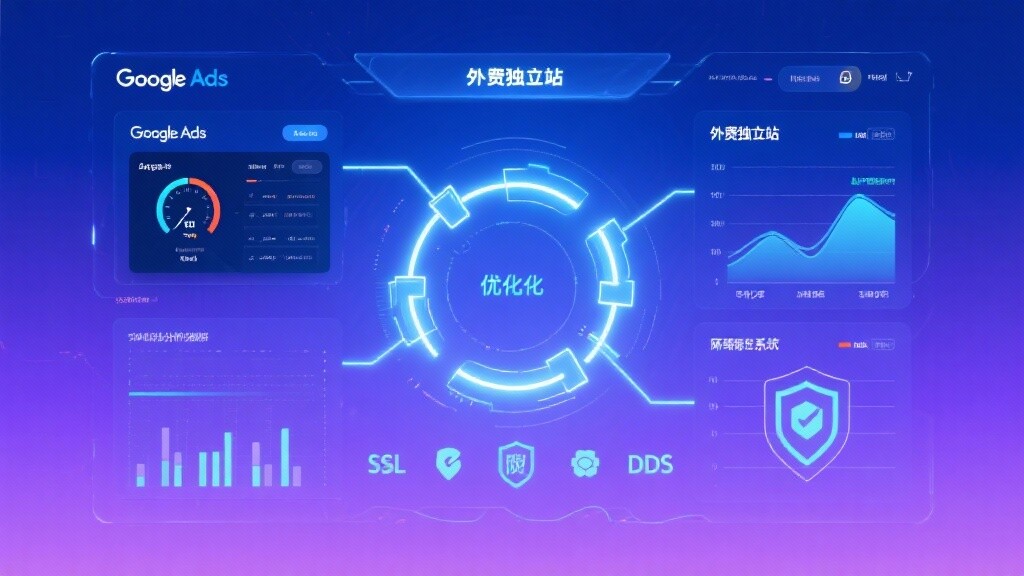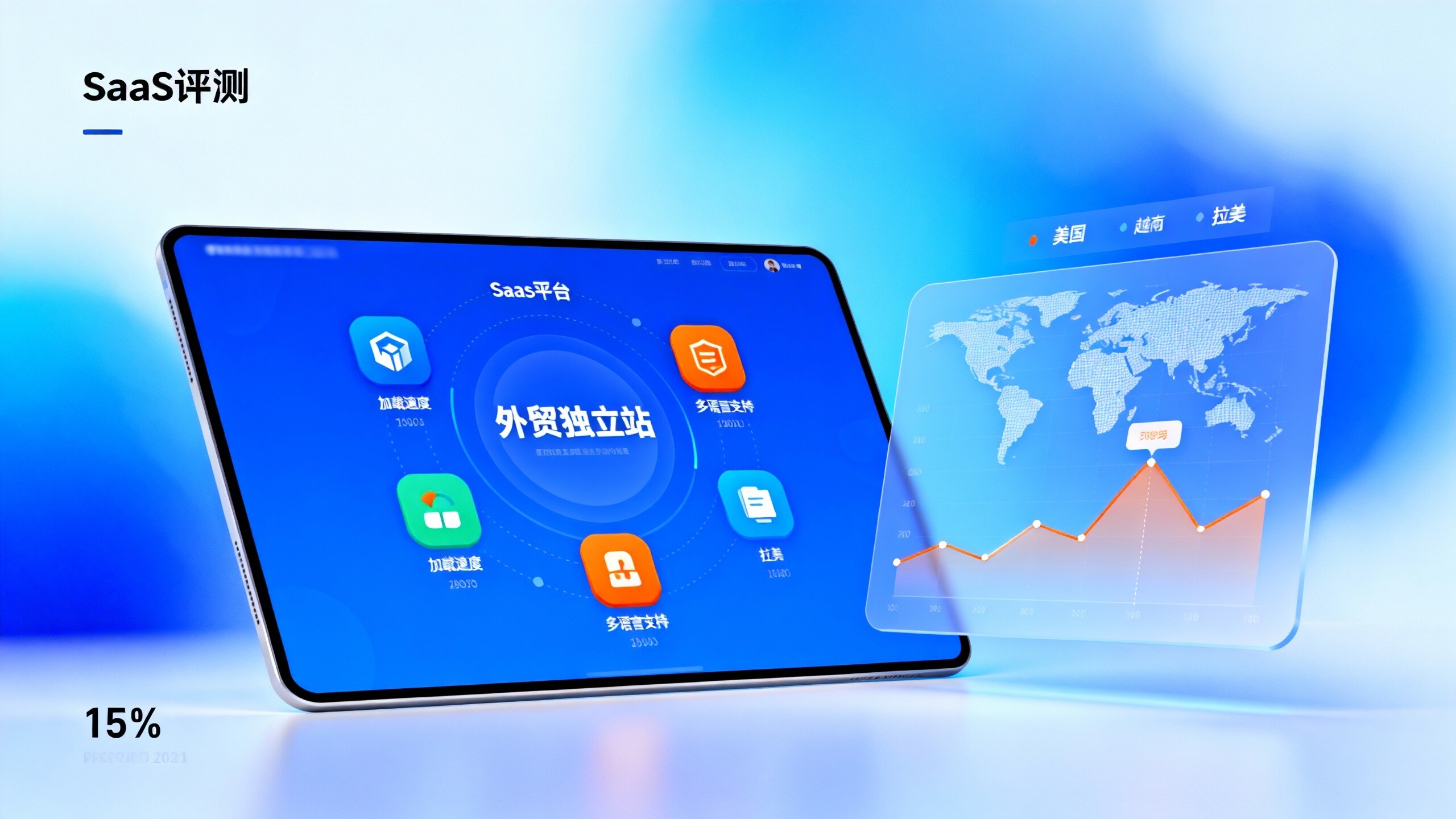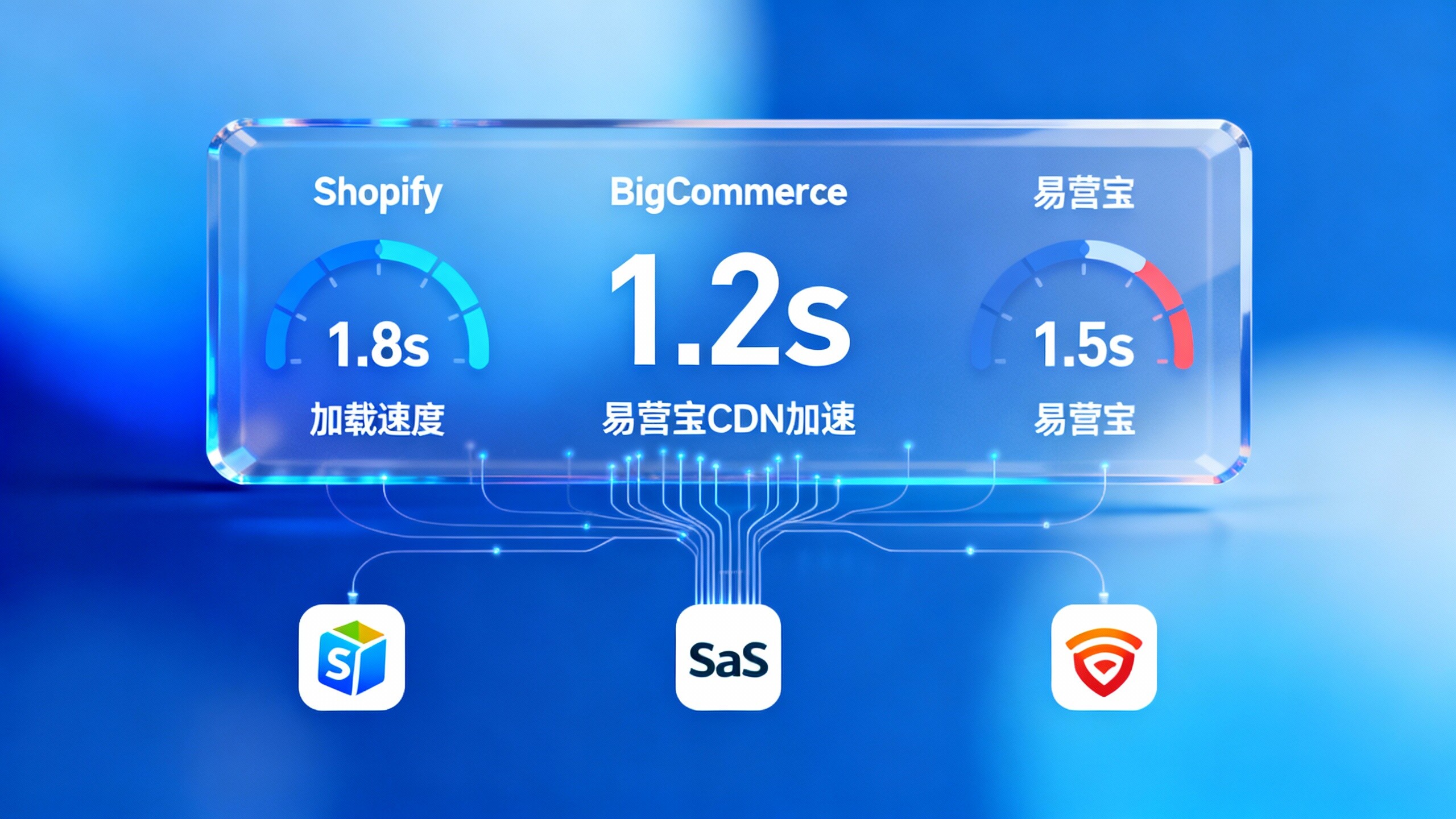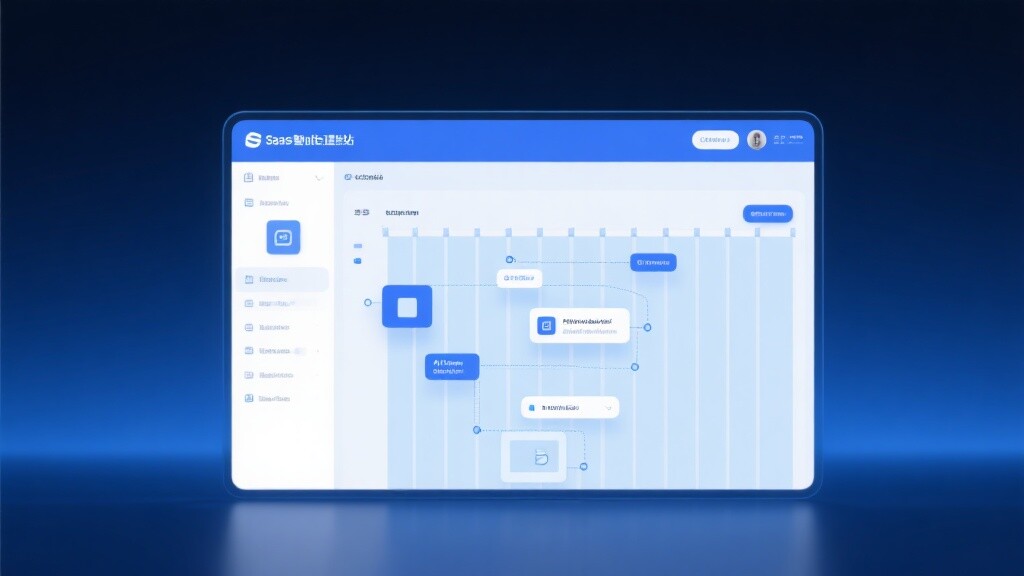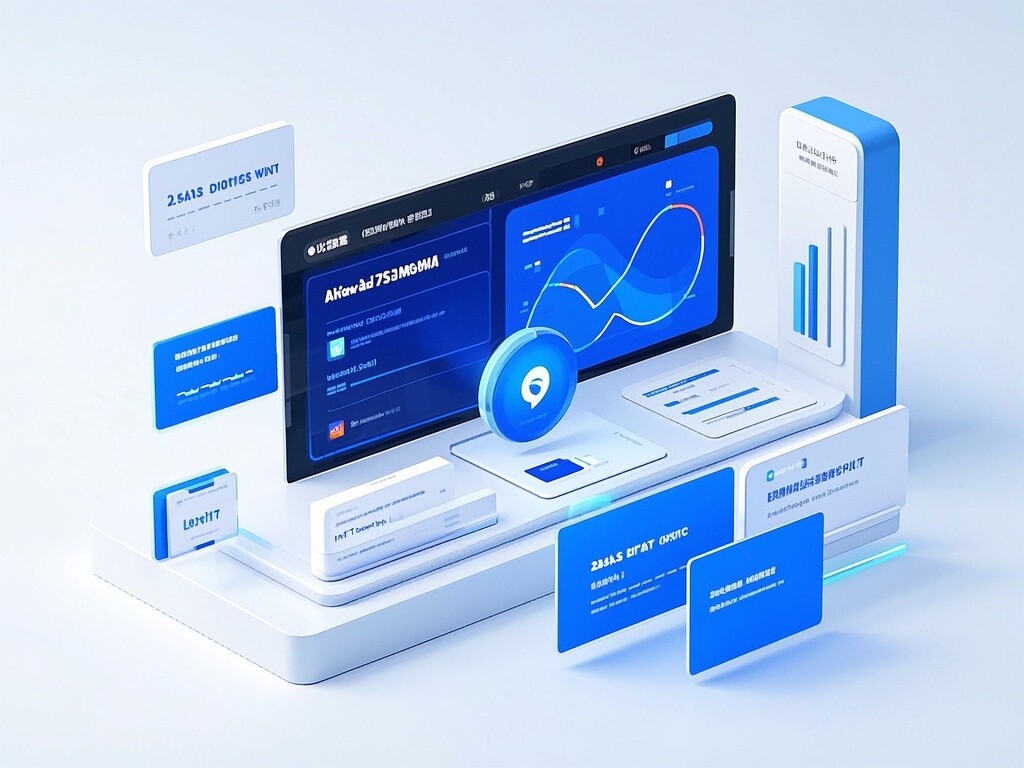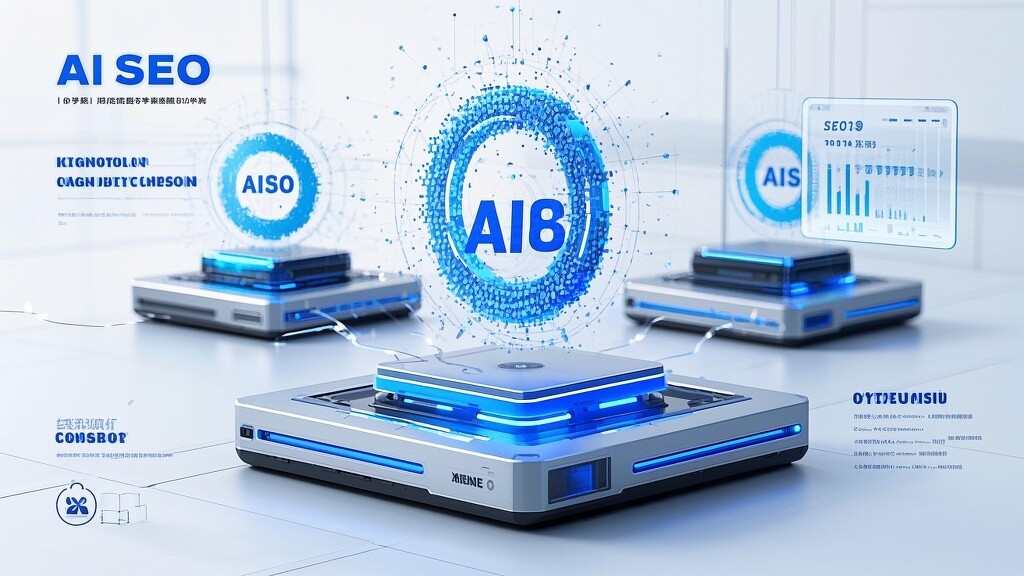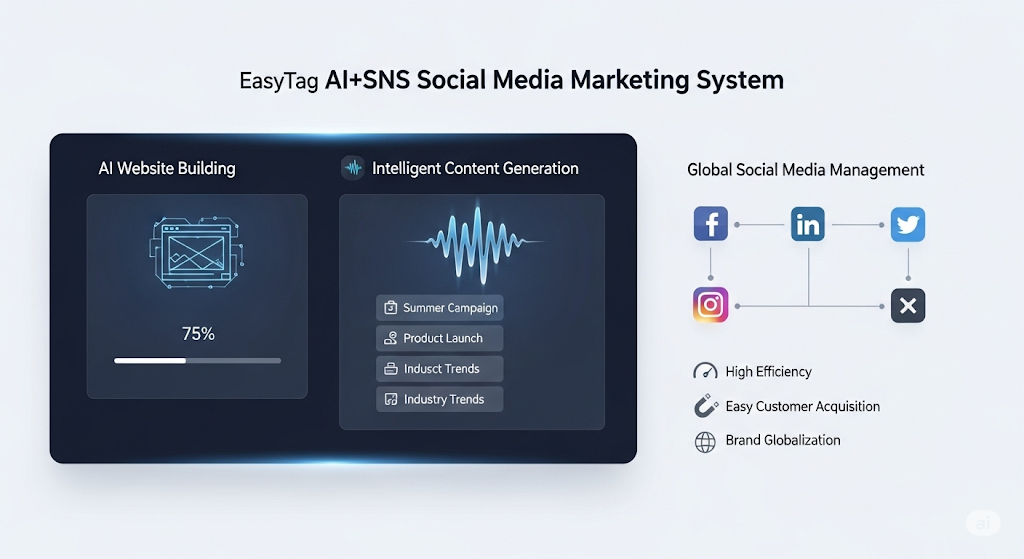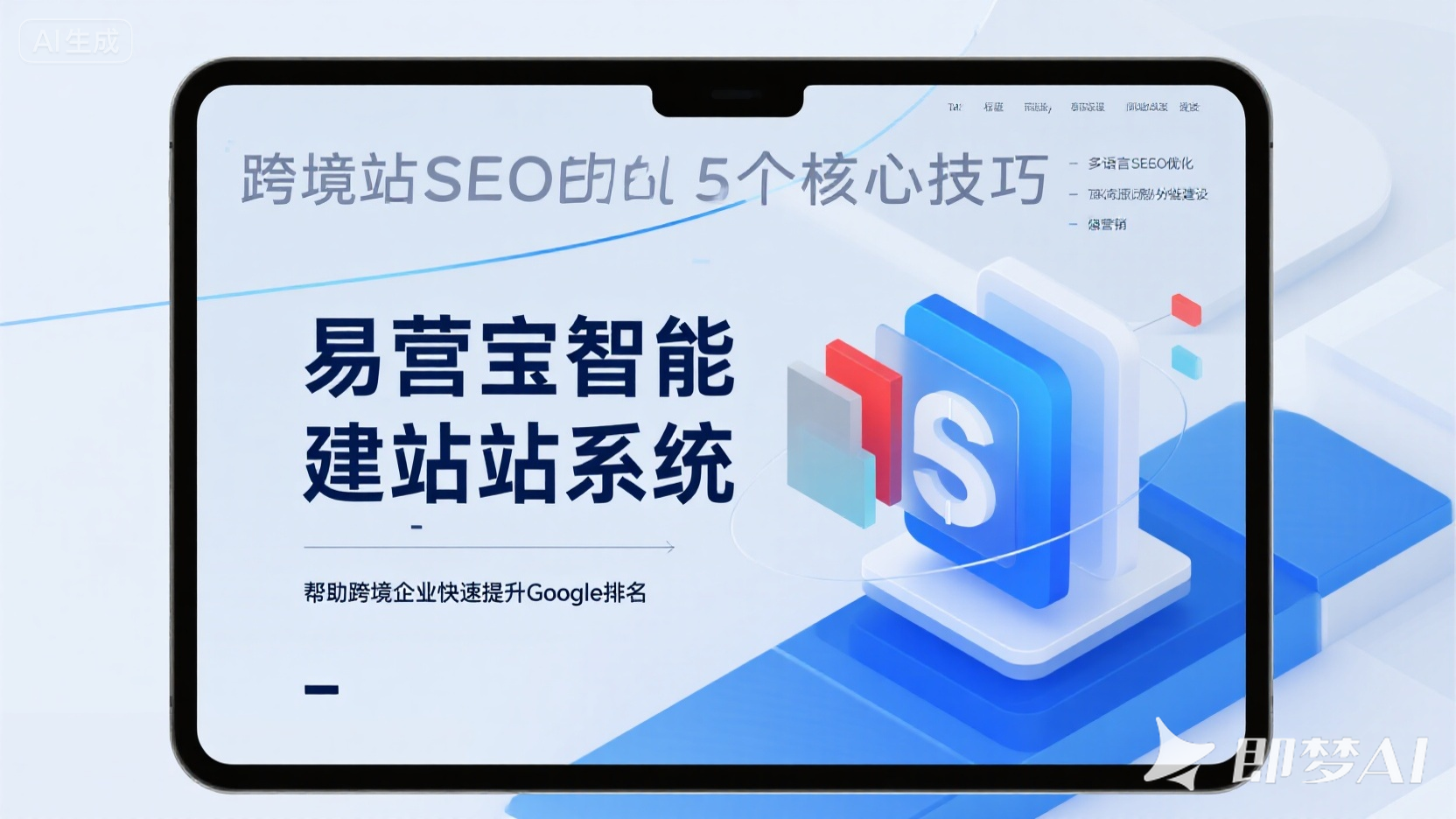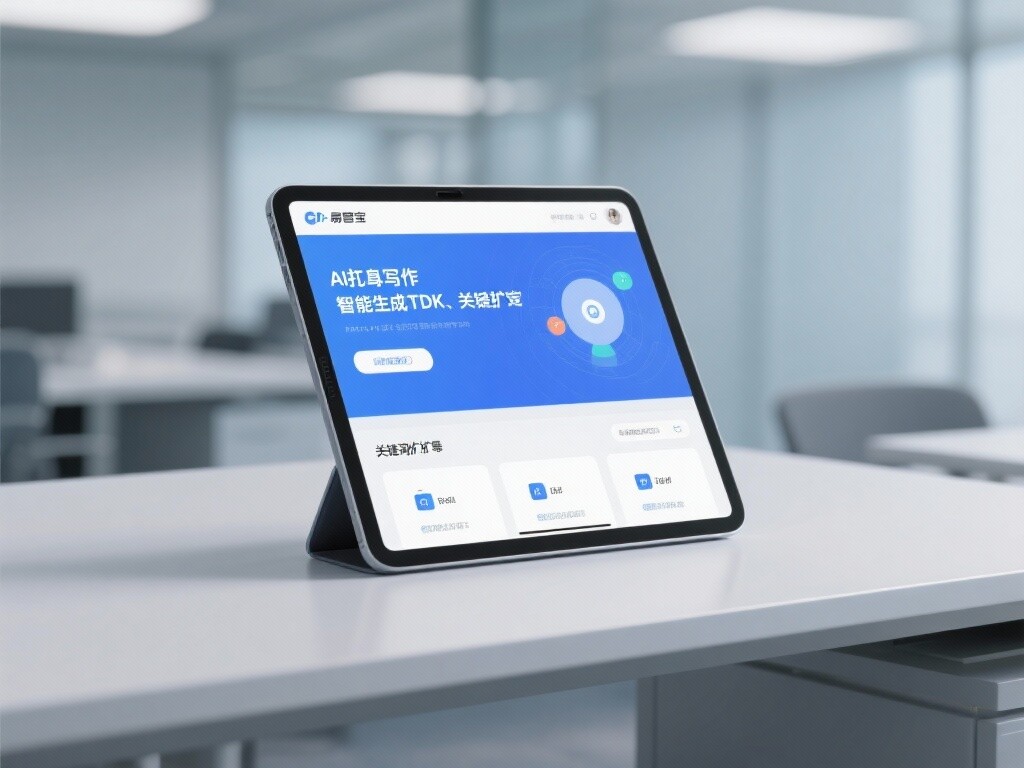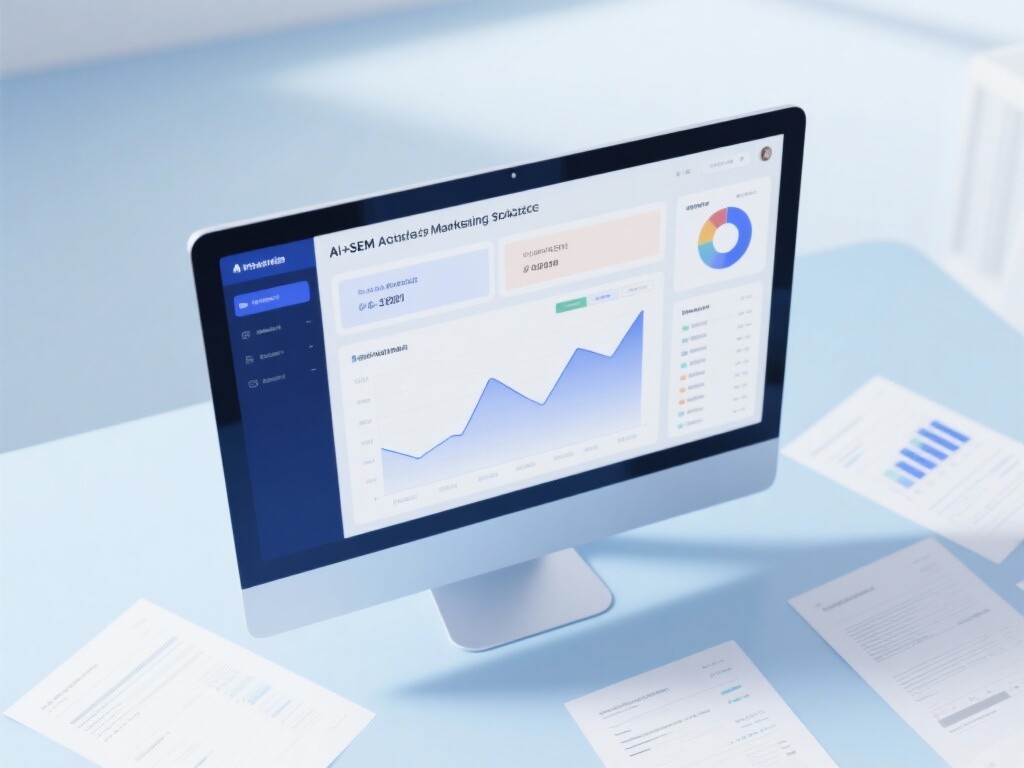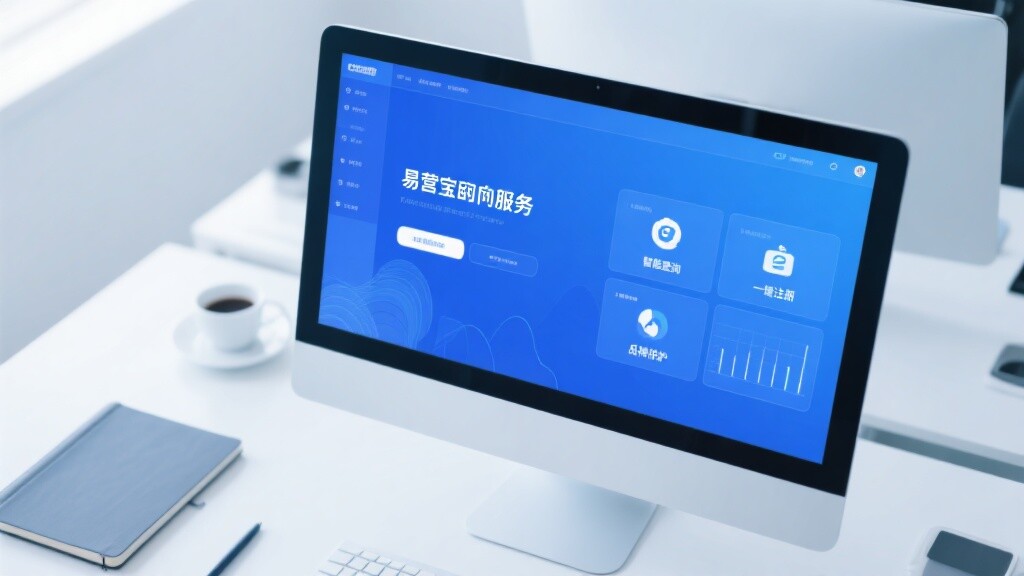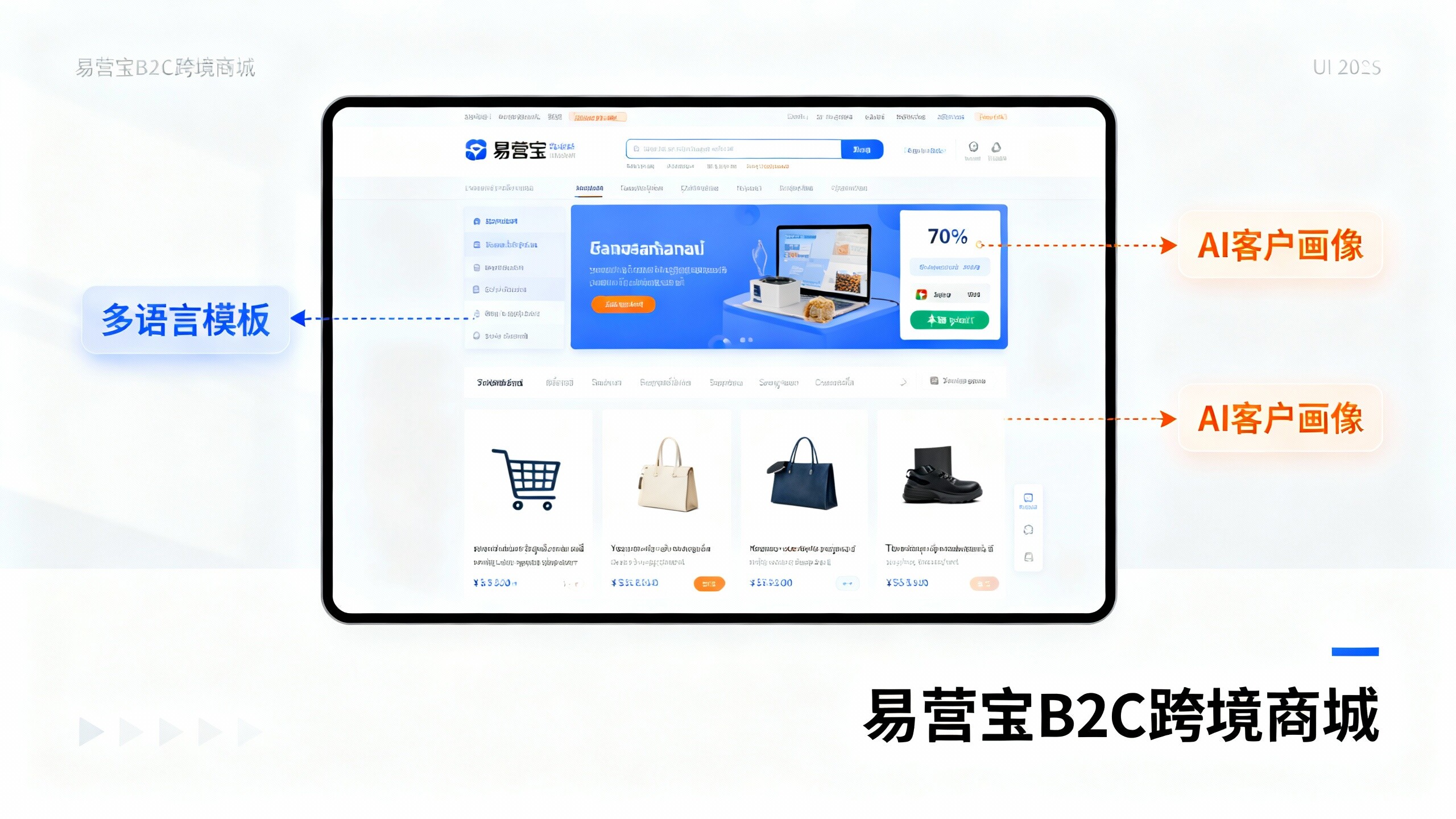Easy Camp Cloud Intelligent Website Construction and Marketing System Platform!
- SaaS Selection Guide for Foreign Trade Independents: Top 5 Platforms to Watch in 20242025-12-05View Details
- In-depth comparison of Shopify vs BigCommerce for the U.S. market for independent website SaaS solutions2025-12-05View Details
- Singapore Independent Website Service Providers Recommendation: These Localization Strategies Double Order Volume2025-12-06View Details
- Vietnam market independent website construction strategy: how to avoid local payment and logistics risks?2025-12-05View Details
- Jiangsu foreign trade independent station service provider evaluation: the 5 strongest technical strength!2025-12-05View Details
- Comparison of Top 10 Beijing Foreign Trade Independent Station Providers: Which one is more suitable for your business needs?2025-12-05View Details
- How to choose a reliable multilingual website builder for foreign trade enterprises?7 evaluation criteria2025-12-04View Details
- Foreign trade marketing system practical evaluation: 3 months to improve the enquiry volume of 200% of the secret2025-12-04View Details
How AI Ad Diagnostics Can Improve Conversion Rates for Foreign Trade Independent Websites? Case Analysis
Introduction
Through AI advertising diagnosis of foreign trade independent stations, combined with SSL certificates, global CDN and DDoS defense, Google Ads and Meta delivery can be accurately optimized to increase the conversion rate of independent stations. This article is aimed at information researchers, users and technical evaluators. It systematically interprets the definition and principles, application scenarios, technical performance and security guarantees of AI advertising diagnosis of foreign trade independent stations. At the same time, it demonstrates how to improve conversion rates in practice through comparative analysis and real cases. Combining the many years of overseas experience and technical capabilities of enterprise-level SaaS service provider Yiyingbao, this article will present a feasible implementation path to help you reduce costs and increase efficiency in the construction of foreign trade independent stations and advertising delivery. The article will also cover key elements such as SSL certificates for foreign trade independent stations, global CDN acceleration for foreign trade independent stations, and DDoS defense for foreign trade independent stations, so that technical evaluators can quickly verify risks and benefits.
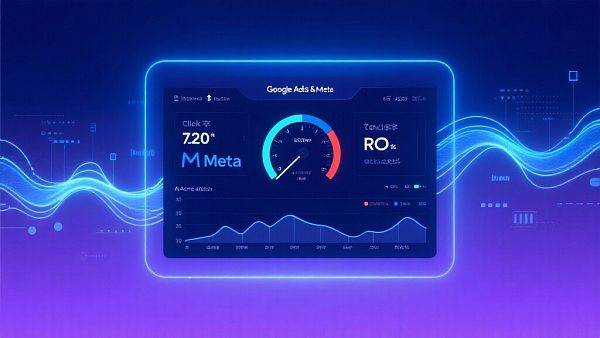
Definition and Principle: What is AI Advertising Diagnosis and Its Role in Foreign Trade Independent Stations
AI Ad Diagnosis leverages machine learning and big data analysis to automatically analyze account structures, keyword performance, ad creatives, and landing page behavior across advertising platforms like Google Ads, Meta, and Yandex, generating optimization recommendations. For independent e-commerce platforms, this diagnostic not only assesses click volume and conversion paths but also integrates site performance metrics (such as global CDN acceleration, SSL certificates, and DDoS protection) to determine the true deliverability of ad placements. Through AI keyword development, automated TDK generation, creative A/B testing, and landing page heatmap analysis, the system identifies inefficient keywords, high-cost audiences, and on-site bottlenecks that hinder conversions. It then proposes comprehensive strategies, including bid adjustments, creative changes, optimized landing page structure, and enhanced security. This data-driven, closed-loop validation process is suitable for both short-term conversions in cross-border e-commerce and long-term development in manufacturing and B2B wholesale scenarios. It can significantly improve the efficiency of Google Ads optimization and Meta advertising agencies for independent e-commerce platforms, while also reducing budget waste and brand risk caused by invalid traffic.
Integration of application scenarios and products: The specific implementation of AI advertising diagnosis in the industry
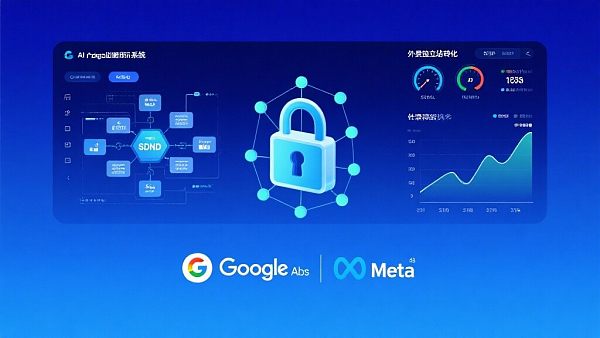
AI ad diagnostics have broad application scenarios, covering everything from new product trials to large-scale global expansion. For cross-border e-commerce sellers, the diagnostic tool can quickly identify high-converting long-tail keywords and match them with dynamic creatives, boosting ROI. For manufacturing and B2B companies, the system prioritizes the behavioral paths of high-value potential customers, optimizing landing page trust factors and form reach. For global brands requiring multilingual creatives and a consistent SEO strategy, AI translation and multilingual TDK automation ensure SEO-friendliness and a consistent user experience. In actual solution design, we integrate AI ad diagnostics with intelligent website building, global CDN, automated SSL, and DDoS protection capabilities to create a closed loop from "advertising-landing page-security and performance." For example, diagnostic results are directly integrated into the A/B variation generation module of intelligent website building, and AI translation engines are used to maintain multilingual consistency. This allows for complete creative updates and multi-market validation within 24-48 hours. To facilitate implementation verification, our platform provides visual reports and recommended action orders, and supports integration with third-party BI systems, enabling end-to-end closed-loop management from strategy development to performance tracking. At the same time, enterprises can choose the full-stack service of Yiyingbao Foreign Trade Super Website to quickly build a site that meets the high-conversion website building needs of foreign trade independent sites, and integrate AI advertising diagnosis to achieve coordinated optimization of delivery and conversion.
Comparative Analysis: The Effectiveness Differences Between Traditional Manual Optimization and AI Advertising Diagnosis
When comparing traditional manual optimization and AI advertising diagnosis, the main differences are reflected in the four dimensions of speed, coverage, reproducibility, and cost. The manual method relies on experience, has a long cycle, and it is difficult to cover a large number of keywords and material variations; AI diagnosis uses parallel computing to quickly complete word expansion, audience stratification, material scoring, and landing page diagnosis, and can identify potential problems and generate executable suggestions in a short time. In addition, the AI solution can be connected to the global CDN acceleration and DDoS defense monitoring of the foreign trade independent station, ensuring the stability and security of advertising diversion from a technical level, thereby avoiding advertising waste due to site unavailability. The following is a comparison table to intuitively present the differences:
Technical performance and security standards: ensuring the availability and compliance of independent foreign trade stations
For independent e-commerce websites, advertising effectiveness depends not only on click-through rates and bidding strategies, but also on the performance and security of landing pages. The ability to carry high concurrent traffic is determined by global CDN and server nodes. An optimal architecture should support over 2,500 server nodes and 120TB of bandwidth, ensuring page load times within 1.5 seconds in target markets, reducing bounce rates and increasing conversion rates. Furthermore, SSL certificates and DDoS protection for independent e-commerce websites are cornerstones of compliance and availability: SSL enhances trust and SEO-friendliness, while DDoS protection ensures business continuity during the campaign. Regarding industry standards, it is recommended to adhere to the OWASP Top 10, ISO/IEC 27001 Information Security Management Principles, and GDPR data processing compliance requirements. In particular, when using an AI-powered translation engine for independent e-commerce websites to process user data, strict distinction must be made between sensitive information and publicly available content. Technical evaluators should focus on the following aspects during acceptance: automated SSL certificate issuance capabilities, CDN intelligent routing and back-to-origin optimization, logging and alerting systems, and AI-based anomaly detection modules. Combining platform capabilities, such as the self-developed AI algorithm platform, NLP and multimodal generation technology, it can achieve automatic iteration of daily strategies and effect backtracking while ensuring security, and provide data-level support for Google Ads optimization and Yandex promotion of foreign trade independent sites.

Customer Case: How AI Ad Diagnosis Improves Conversion Rates in Actual Projects (Example)
The following is a typical, adapted case study, illustrating the logic and effectiveness of AI ad diagnostics in boosting conversions on independent e-commerce platforms. A cross-border e-commerce client was running both Google Ads and Meta ads in Europe and the Middle East. Initially, they faced high click-through rates, low conversions, high bounce rates, and poor multilingual indexing. Using the AI ad diagnostic tool, the team completed keyword re-stratification, creative replacement, and multilingual landing page optimization within a week. They also integrated global CDN acceleration and SSL configuration for the independent e-commerce platform to address cross-regional return latency and local certificate mismatch issues. Within 30 days of the optimization, ad cost-per-click (CPC) decreased by 28%, conversion rates increased by approximately 85%, average order value increased by 12%, and advertising budget utilization significantly improved. This case study highlights two key points: first, AI diagnostics can quickly identify and resolve multi-dimensional issues impacting conversions; second, site performance and security measures (such as global CDN acceleration and DDoS protection for independent e-commerce platforms) have a direct impact on sustained campaign effectiveness. Technical evaluators can extract quantifiable KPIs (loading time, bounce rate, cost per conversion, and advertising budget utilization) from this link to facilitate performance alignment with internal or third-party delivery teams.
Procurement Guide and Implementation Steps: How to Select and Deploy an AI Advertising Diagnostic System
When companies decide to implement AI advertising diagnostic capabilities, they should evaluate vendors based on four key dimensions: requirements, technical compatibility, data visualization, and operational assurance. First, identify the business scenario (manufacturing, cross-border e-commerce, B2B wholesale, or global brand expansion) and establish short-, medium-, and long-term KPIs. Second, examine whether the product supports multilingual management, automatic translation, and integration with the intelligent website building system for independent foreign trade websites. Verify technical specifications such as loading time (under 1.5 seconds), supported languages (100+), server nodes (2500+), and bandwidth capacity (120TB). Third, assess security capabilities, including automated SSL certificate management, DDoS protection, and log auditing. Finally, examine the service model and localization support capabilities to confirm whether they can quickly respond to changes in advertising platform policies and local compliance requirements. The recommended implementation process consists of five steps: 1) Assessment and goal setting; 2) Technology and data integration (advertising accounts, site monitoring, and CDN logs); 3) Diagnosis and initial strategy iteration (keyword development, creatives, and landing pages); 4) A/B testing and continuous optimization; and 5) Reporting and scaled rollout. When making purchase comparisons, consider alternatives and their costs: purely manual optimization offers low short-term costs but is difficult to scale, and third-party advertising agencies may lack the ability to integrate site performance. For a quick implementation, you can choose a vendor that integrates website building, SEO, and advertising diagnostics to reduce interface costs and operational complexity. For example, platform-based products offer closed-loop capabilities from website building to delivery, facilitating integrated management of "advertising-site-conversion." For quick integration solutions, visit our solutions page or contact sales for a demo and ROI calculation tool. You can also directly experience the full-link capabilities of the Yiyingbao Foreign Trade Super Website and quickly begin a pilot.
Frequently Asked Questions (FAQ) and Future Trend Analysis
Q: Can AI ad diagnosis completely replace manual labor? A: AI far surpasses manual labor in efficiency and coverage, but strategic judgment, industry insights, and complex negotiations still require human leadership; the best practice is human-machine collaboration. Q: How can the localization quality of multilingual translations be ensured? A: A process combining an AI translation engine with manual localization review should be adopted, with automated batch generation of drafts. Quality control is then performed by local teams in the target market or language service providers. Q: What happens if a site is attacked by a DDoS attack? A: Site availability must be ensured first. DDoS protection and traffic scrubbing strategies must be enabled, and ads should be paused or redirected to alternate pages to avoid wasted ad budget. Looking ahead, AI is expected to further penetrate creative generation, multimodal ad creatives, and real-time adjustments to delivery strategies. Ad diagnostic tools will be deeply integrated with technical layers such as website development, CDN, and WAF, achieving a truly closed-loop delivery-implementation-security system. At the same time, privacy compliance and cross-border data governance will become key concerns for all parties, driving diagnostic tools towards stricter data compliance capabilities. Conclusion: Only by integrating technology, processes, and compliance can companies achieve sustainable high conversion rates in the competitive e-commerce market. If you would like a diagnostic white paper based on industry best practices or a free trial plan, please contact our expert team for customized advice and performance evaluation.
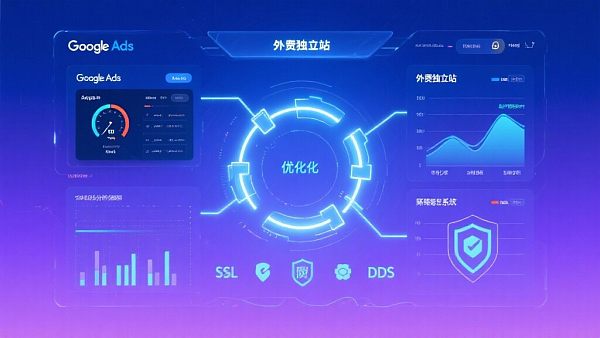
Why choose us/ Contact us
Since its founding in 2013, Yiyingbao has been deeply engaged in digital marketing and AI technology. Leveraging its status as a Google Premier Partner and official Meta agent, we have developed comprehensive capabilities, from intelligent website building and SEO to AI-powered advertising diagnostics. We provide technology-driven, localized implementation services, helping companies achieve refined optimization of Google Ads and Meta ads while ensuring SSL certificates and DDoS protection for independent foreign trade websites. If you're looking to systematically improve your advertising and website building performance, please request a product demo or technical consultation. Our expert team will provide quantifiable improvement solutions and pilot programs tailored to your industry needs.
- Campbell (name)
- free-standing station
- Intelligent website building system
- Intelligent website building
- AI translation
- AI translation engine
- Google Ads Optimization
- AI Translation Engine for Independent Foreign Trade Websites
- Yandex Promotion for Independent Foreign Trade Websites
- Foreign trade independent website
- High-Converting Website for Independent Foreign Trade
- SSL certificate
- Yandex Promotion
- Construction of Independent Foreign Trade Websites
- Independent website construction
- Meta Ads
- Google Ads
- SEO
- Global CDN Acceleration
- Global CDN Acceleration for Independent Foreign Trade Websites
- Meta Ads Agency for Independent Foreign Trade Websites
- AI Advertising Diagnosis for Independent Foreign Trade Websites
- DDoS defense for foreign trade independent website
- Foreign trade independent site SSL certificate
- Intelligent website building system for foreign trade independent website
Related articles
 SaaS Selection Guide for Foreign Trade Independents: Top 5 Platforms to Watch in 2024
SaaS Selection Guide for Foreign Trade Independents: Top 5 Platforms to Watch in 2024 In-depth comparison of Shopify vs BigCommerce for the U.S. market for independent website SaaS solutions
In-depth comparison of Shopify vs BigCommerce for the U.S. market for independent website SaaS solutions Singapore Independent Website Service Providers Recommendation: These Localization Strategies Double Order Volume
Singapore Independent Website Service Providers Recommendation: These Localization Strategies Double Order Volume
Related products

